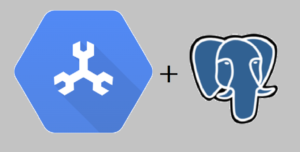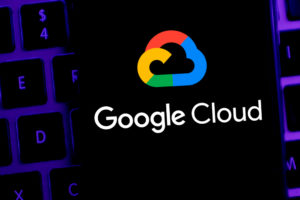

Google Cloud has developed a PostgreSQL interface for Spanner, its globally distributed relational database. The new interface, which is in preview and which is being officially unveiled tomorrow at Google Cloud’s Next ’21 conference, is designed to lower the barrier of entry for a uniquely scalable database that supports some of the biggest workloads on the planet.
Up until 2021, Spanner has mostly been used by larger companies that not only have the need for a database with 99.999% availability, but also can afford to pay the Spanner fees, which started at $650 per month. That’s not a trivial amount, and it reflects the considerable amount of hardware infrastructure required to support a system that is capable of running one billions queries per second, Google Cloud said.
Remember that Google Cloud uses super-sensitive atomic clocks and GPS systems to deliver the transactional guarantees necessary for a globally distributed relational database, which is no small feat. This is part of the reason why Spanner use has been somewhat restricted, at least up until now. But Google Cloud clearly is looking to take the shackles off Spanner and bolster its usage.
One way it’s doing that is by eliminating cost as a barrier. It did that earlier this year when it announced that customers can get started on just a 10% slice of Spanner for just $65 per month, with the ability to scale up the Spanner deployment incrementally to support full petabyte-scale workloads.
Now, with the revelation that Google Cloud is delivering a PostgreSQL-compatible interface for Spanner, it’s working eliminate the need to rewrite your database application to support Spanner as a barrier, too.
Andi Gutmans, the vice president and general manager of databases at Google Cloud, explained what drove Google Cloud to open up Spanner in an exclusive conversation with Datanami.
“While we’ve been using ANSI SQL–and of course SQL is very familiar to developers–the whole tooling ecosystem, framework ecosystem [for Spanner] we had to develop,” Gutmans said. “So if you want to use like Hibernate or other tools, we had to develop all the adapters. And obviously we’re only a limited size team we can’t do everything.
“So what we [said] is why don’t we go and support a PostgreSQL interface,” Gutmans continued. “Basically, make it very, very easy for people with existing tools, existing skillsets, to come and use Spanner.”
Google Cloud is delivering PostgreSQL support two different ways. For starters, it has started to add native support for PostgreSQL data types and the PostgreSQL grammar on Spanner itself. Spanner doesn’t support all of the data types and grammar that PostgreSQL offers, but the plan is to add more support over time.
The other method involves deployment of a “sidecar” next to the Google Cloud Compute instance that runs Spanner (it’s not an actual sidecar, just a virtual one). The sidecar essentially translates the wire protocol from the PostgreSQL to Spanner.
“For customers who want to use the Postgres wire protocol, that don’t want to make changes, we actually have a sidecar they can deploy on the client side,” Gutmans said. “That way, customers get the best of both worlds. They can still get to use tools like PostgresSQL but they’re still getting the five-nines availability of Spanner, the global network routing benefits and so on.”
The new $65/month entry fee and the capability to scale to petabyte-size deployments has already paid dividends in spurring Spanner interest, and the hope is the new PostgreSQL interface will generate even more interest, Gutmans said.
“Theres’ been a huge spike in new users coming in trying out PostgreSQL, and we haven’t even GA’d yet,” he said.
Gaming companies are among the outfits that could benefit the most. There are many smaller gaming companies that don’t have the resources for a large scale-out infrastructure, which can hobble their ability to scale to meet surging demand.
“With granular instance sizing, they can basically launch a game with almost no cost,” he said. “But if it hit overnight success, they’re basically future-proof. They know that they’re going to be able to scale to whatever size they need to and scale up with zero downtime.”
Google Cloud Next ’21 is taking place today through Thursday. For other company announcements, see “Google Cloud Widens Its Big Data Reach at Next ’21.” Google Cloud CEO Thomas Kurian and Sundar Pichai, the CEO of Google and parent company Alphabet, will be kicking things off with a keynote this morning at 9 a.m. PT. See cloud.withgoogle.com/next for more information.
Related Items:
One on One with Google Cloud Product Director Irina Farooq
Google Cloud Tackles Data Unification with New Offerings
June 13, 2025
- PuppyGraph Announces New Native Integration to Support Databricks’ Managed Iceberg Tables
- Striim Announces Neon Serverless Postgres Support
- AMD Advances Open AI Vision with New GPUs, Developer Cloud and Ecosystem Growth
- Databricks Launches Agent Bricks: A New Approach to Building AI Agents
- Basecamp Research Identifies Over 1M New Species to Power Generative Biology
- Informatica Expands Partnership with Databricks as Launch Partner for Managed Iceberg Tables and OLTP Database
- Thales Launches File Activity Monitoring to Strengthen Real-Time Visibility and Control Over Unstructured Data
- Sumo Logic’s New Report Reveals Security Leaders Are Prioritizing AI in New Solutions
June 12, 2025
- Databricks Expands Google Cloud Partnership to Offer Native Access to Gemini AI Models
- Zilliz Releases Milvus 2.6 with Tiered Storage and Int8 Compression to Cut Vector Search Costs
- Databricks and Microsoft Extend Strategic Partnership for Azure Databricks
- ThoughtSpot Unveils DataSpot to Accelerate Agentic Analytics for Every Databricks Customer
- Databricks Eliminates Table Format Lock-in and Adds Capabilities for Business Users with Unity Catalog Advancements
- OpsGuru Signs Strategic Collaboration Agreement with AWS and Expands Services to US
- Databricks Unveils Databricks One: A New Way to Bring AI to Every Corner of the Business
- MinIO Expands Partner Program to Meet AIStor Demand
- Databricks Donates Declarative Pipelines to Apache Spark Open Source Project
June 11, 2025
- What Are Reasoning Models and Why You Should Care
- The GDPR: An Artificial Intelligence Killer?
- Fine-Tuning LLM Performance: How Knowledge Graphs Can Help Avoid Missteps
- It’s Snowflake Vs. Databricks in Dueling Big Data Conferences
- Snowflake Widens Analytics and AI Reach at Summit 25
- Top-Down or Bottom-Up Data Model Design: Which is Best?
- Why Snowflake Bought Crunchy Data
- Inside the Chargeback System That Made Harvard’s Storage Sustainable
- Change to Apache Iceberg Could Streamline Queries, Open Data
- dbt Labs Cranks the Performance Dial with New Fusion Engine
- More Features…
- Mathematica Helps Crack Zodiac Killer’s Code
- It’s Official: Informatica Agrees to Be Bought by Salesforce for $8 Billion
- AI Agents To Drive Scientific Discovery Within a Year, Altman Predicts
- Solidigm Celebrates World’s Largest SSD with ‘122 Day’
- DuckLake Makes a Splash in the Lakehouse Stack – But Can It Break Through?
- The Top Five Data Labeling Firms According to Everest Group
- Who Is AI Inference Pipeline Builder Chalk?
- IBM to Buy DataStax for Database, GenAI Capabilities
- ‘The Relational Model Always Wins,’ RelationalAI CEO Says
- VAST Says It’s Built an Operating System for AI
- More News In Brief…
- Astronomer Unveils New Capabilities in Astro to Streamline Enterprise Data Orchestration
- Yandex Releases World’s Largest Event Dataset for Advancing Recommender Systems
- Astronomer Introduces Astro Observe to Provide Unified Full-Stack Data Orchestration and Observability
- BigID Reports Majority of Enterprises Lack AI Risk Visibility in 2025
- Databricks Announces Data Intelligence Platform for Communications
- MariaDB Expands Enterprise Platform with Galera Cluster Acquisition
- Snowflake Openflow Unlocks Full Data Interoperability, Accelerating Data Movement for AI Innovation
- Databricks Unveils Databricks One: A New Way to Bring AI to Every Corner of the Business
- Gartner Predicts 40% of Generative AI Solutions Will Be Multimodal By 2027
- Databricks Announces 2025 Data + AI Summit Keynote Lineup and Data Intelligence Programming
- More This Just In…




























